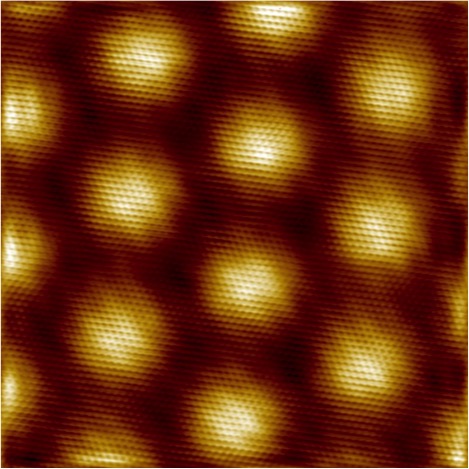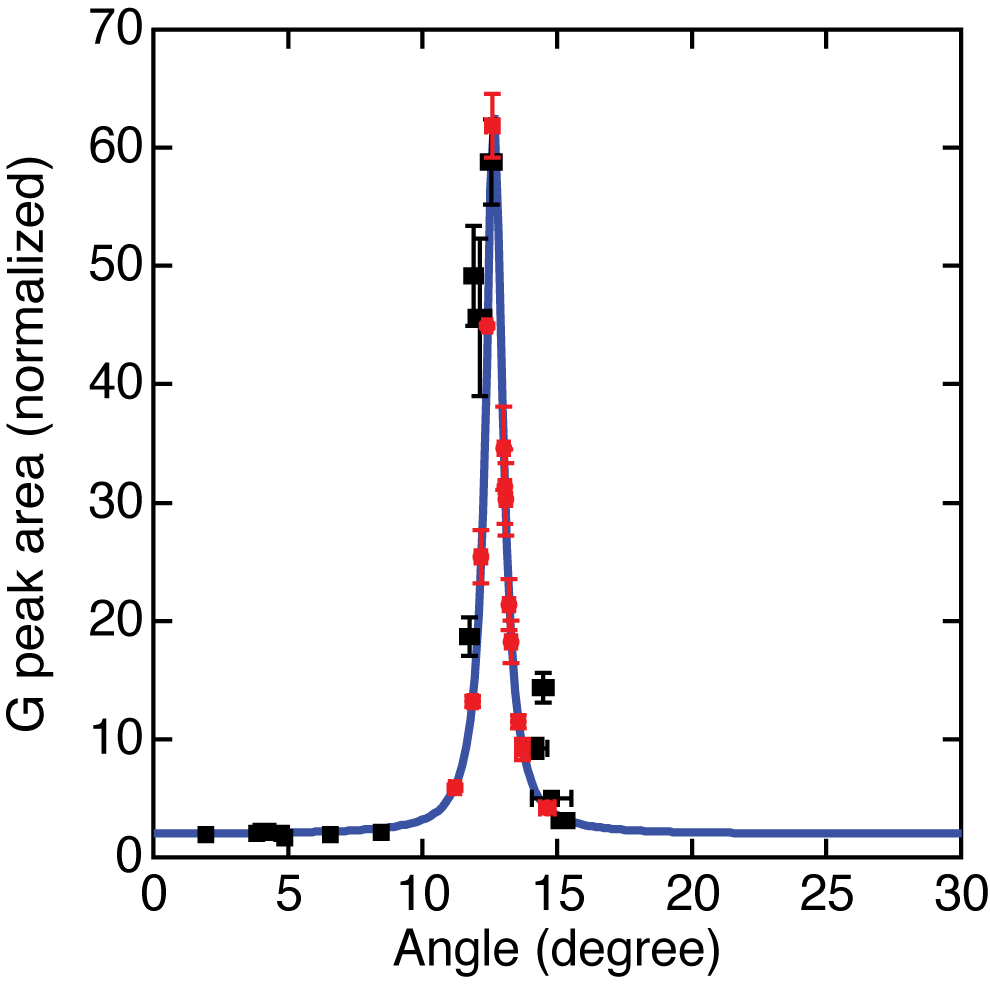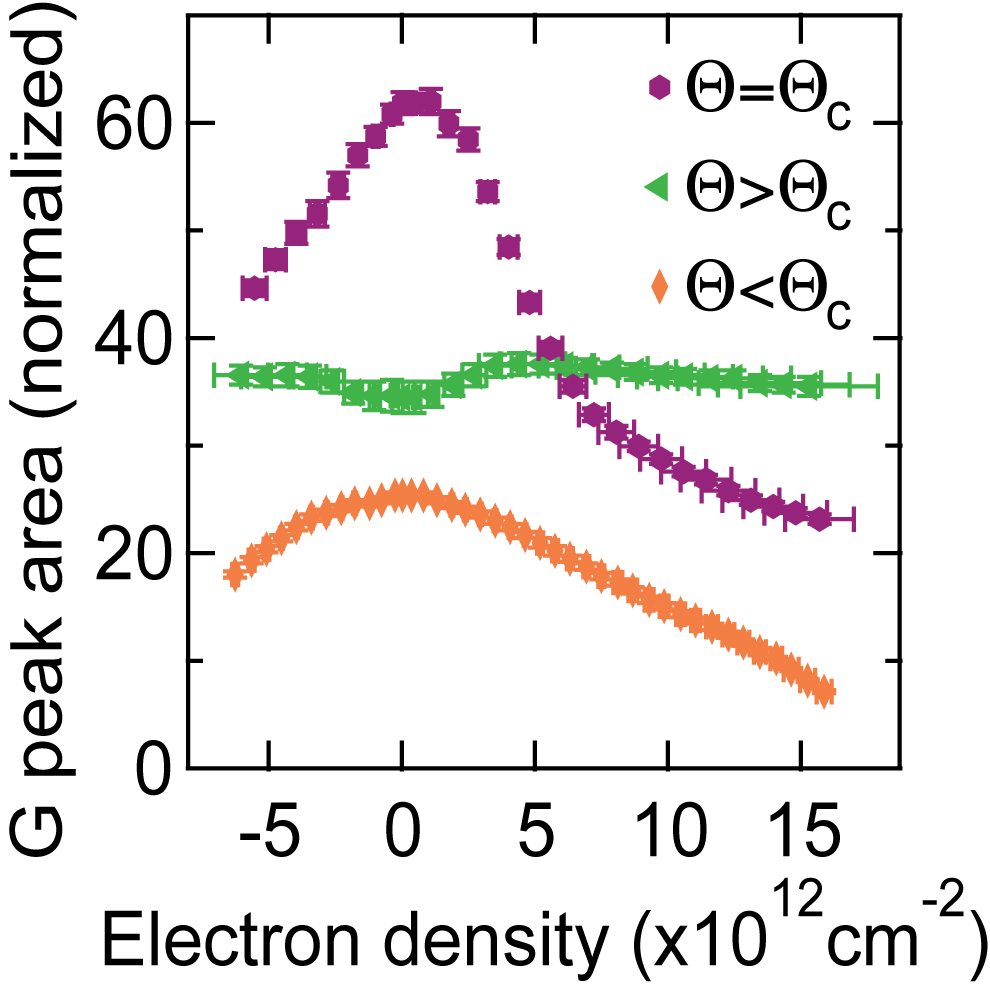Twised Bilayer Graphene
When two monolayers of graphene are stacked on top of each other with a rotation angle between the two lattices, two sets of Dirac cones are created. These cones are displaced in momentum space by an amount proportional to the rotation angle. When the bands from the two Dirac cones cross, new van Hove singularities are formed. Therefore the energy of these new van Hove singularities is controlled by the rotation angle.
Using scanning tunneling micrscopy, we can identify the rotation angle between graphene layers based on the wavelength of the moire pattern that is formed. Then, using Raman spectroscopy we have examined the strength of the G peak as a function of rotation angle. We observe a large increase when the energy of the laser is on resonance with the separation of the van Hove singularities. As the graphene is doped, the strength of this peak decreases for angles smaller than the resonace condition. In contrast, for larger angles we observe a maximum in the Raman G peak at a finite charge density. This work is posted on arXiv


